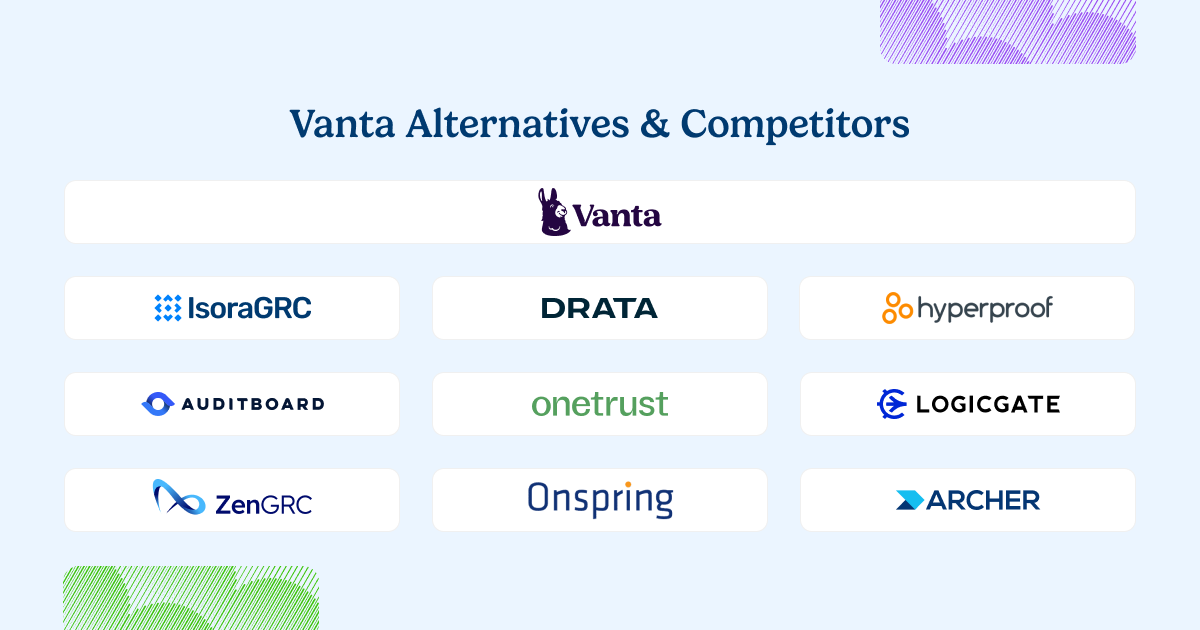
Vanta is one of the most recognizable names in compliance automation, known for helping startups and scale-ups get SOC 2 and ISO 27001 certified quickly. It automates evidence collection through integrations and agent-based tracking—but that’s where the platform’s strengths end.
For security teams looking to assess risk across departments and vendors, manage inventories, or track exceptions, Vanta lacks the workflows and flexibility needed to support a real IT risk management program. It’s built to help you pass the audit—not manage what happens between audits.
Vanta is part of the security compliance automation category—tools focused on certification, not long-term risk governance.
Why Teams Look for Vanta Alternatives
| Common Limitation | Why It’s a Problem | What to Look for Instead |
| Audit-first design | Great for SOC 2, but not for broader risk programs | Purpose-built for security risk management |
| Closed-system agent approach | Doesn’t fit decentralized or hybrid environments | Flexible assessments across internal and external teams |
| No exception or risk register workflows | Can’t track or resolve issues beyond audit scope | Built-in risk and exception tracking |
| Low usability beyond compliance stakeholders | Limited collaboration and adoption outside core users | Platform designed for org-wide participation |
What to Look for in a Vanta Alternative
- Structured assessment workflows for internal teams and vendors
- Risk tracking and exception tracking that goes beyond audit prep
- Tools that support collaborative, ongoing risk management
- Fast deployment without being locked into a rigid ecosystem
- A platform designed to grow with your security and compliance maturity
Top Vanta Alternatives
1. Isora GRC
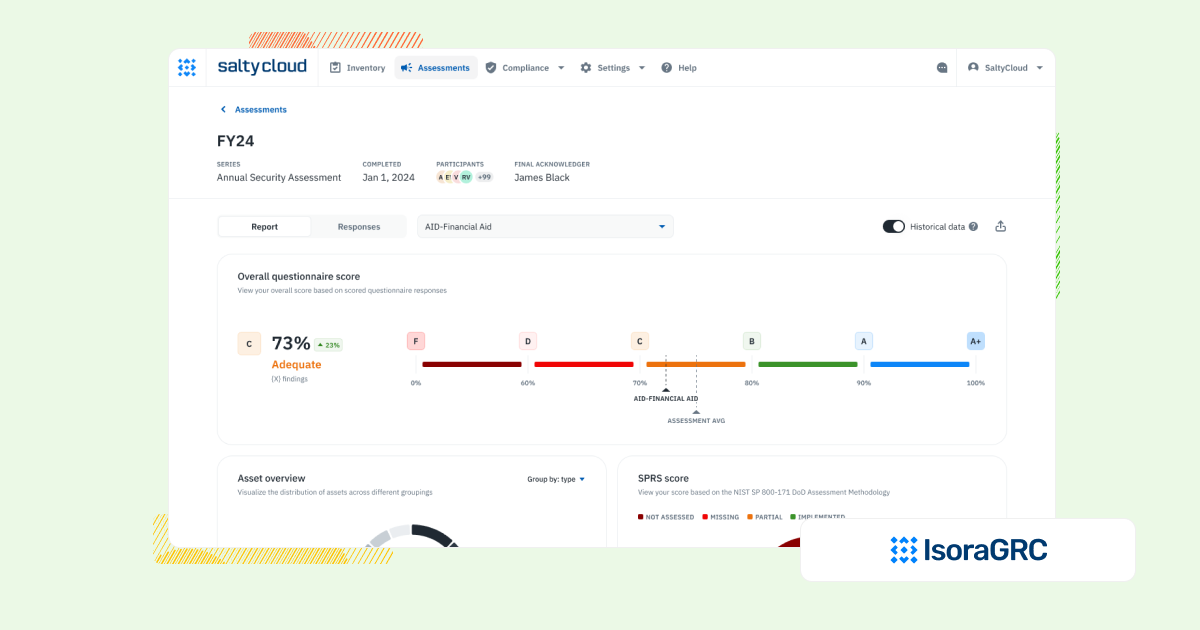
| Category | Details |
| Best For | Security teams that need to operationalize IT and third-party risk management across assets, third-party vendors, and business units. |
| Overview | Isora GRC is the GRC Assessment Platform™ built specifically for information security teams. It supports the full risk workflow, from assessments and questionnaires to risks, inventory, and reporting, without the complexity of legacy GRC tools or the limitations of audit-first platforms. |
| Strengths | Built for workflows, not checklists
✅ Supports assessments, inventory tracking, risk registers, and exceptions in a unified experience. Designed for org-wide adoption ✅ WCAG-compliant UX that requires no training and makes risk everyone’s job. Fast time-to-value ✅ Live in days or weeks, with no-code setup and minimal lift from IT. Flexible by default ✅ Customizable assessments, scalable categories, and framework mapping without heavy configuration. Scales across teams and vendors ✅ Works equally well for internal teams and third-party risk management programs. |
| Limitations | ⚠️ Not designed for legal, audit, or finance teams seeking one platform for enterprise-wide GRC
⚠️ May be too structured for teams looking to build one-off surveys or lightweight audits without repeatable workflows |
| When to Consider | If you need a modern risk platform built for continuous use, with workflows your security team will actually adopt, without the audit-first limitations of certification-focused compliance tools. |
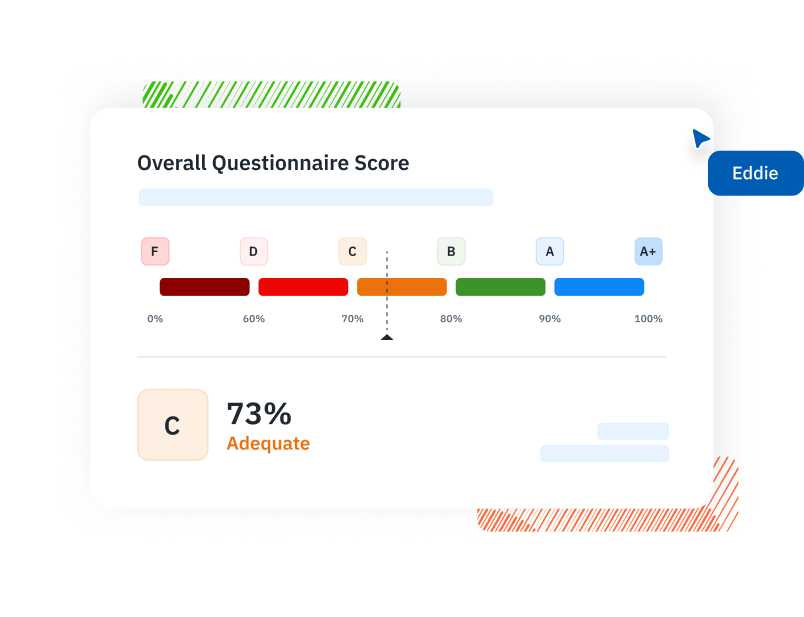
2. Drata
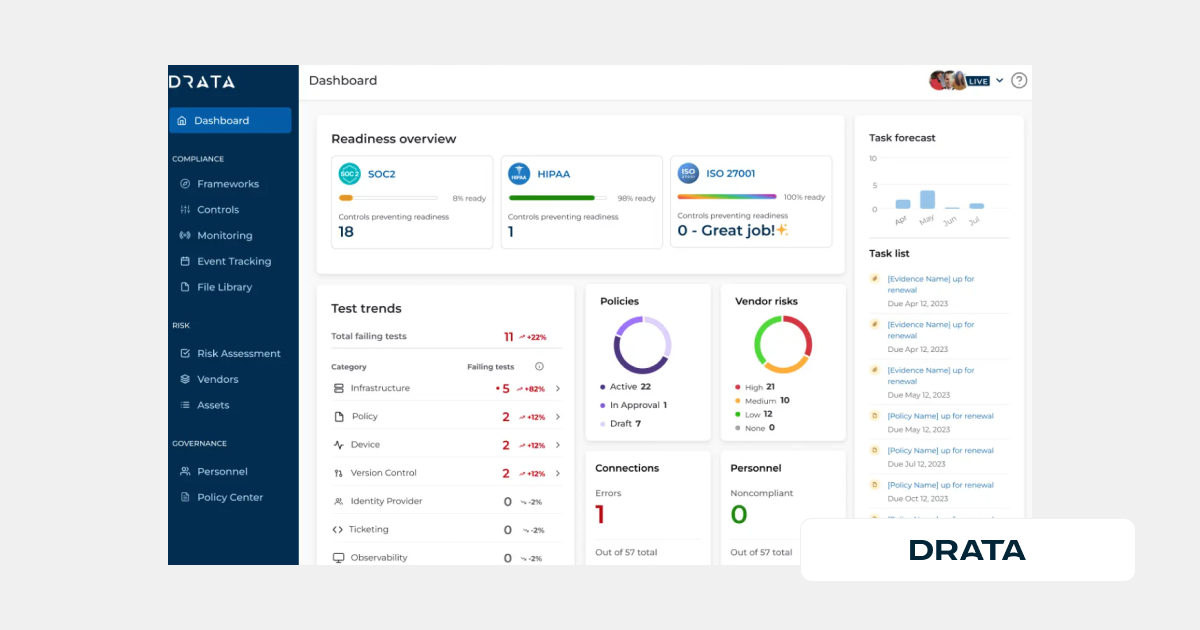
| Category | Details |
| Best For | Startups and growing companies automating SOC 2, ISO 27001, and other certifications quickly. |
| Overview | Drata is a popular compliance automation tool focused on fast audit prep. It automates evidence collection well but doesn’t provide structured tools for IT risk assessments, vendor reviews, or exception management across your organization. |
| Strengths | ✅ Fast-track to certification with automated control monitoring
✅ Integrates with popular cloud tools and frameworks |
| Limitations | ⚠️ Built around passing audits, not managing long-term risk or remediation
⚠️ Lacks workflows for risk registers, vendor tracking, and exception ownership |
| When to Consider | If your short-term goal is certification, but you can work around the platform’s limited ability to support structured risk management and cross-functional collaboration beyond audit readiness. |
| Other Comparisons | Drata vs OneTrust vs Isora GRC |
3. Hyperproof
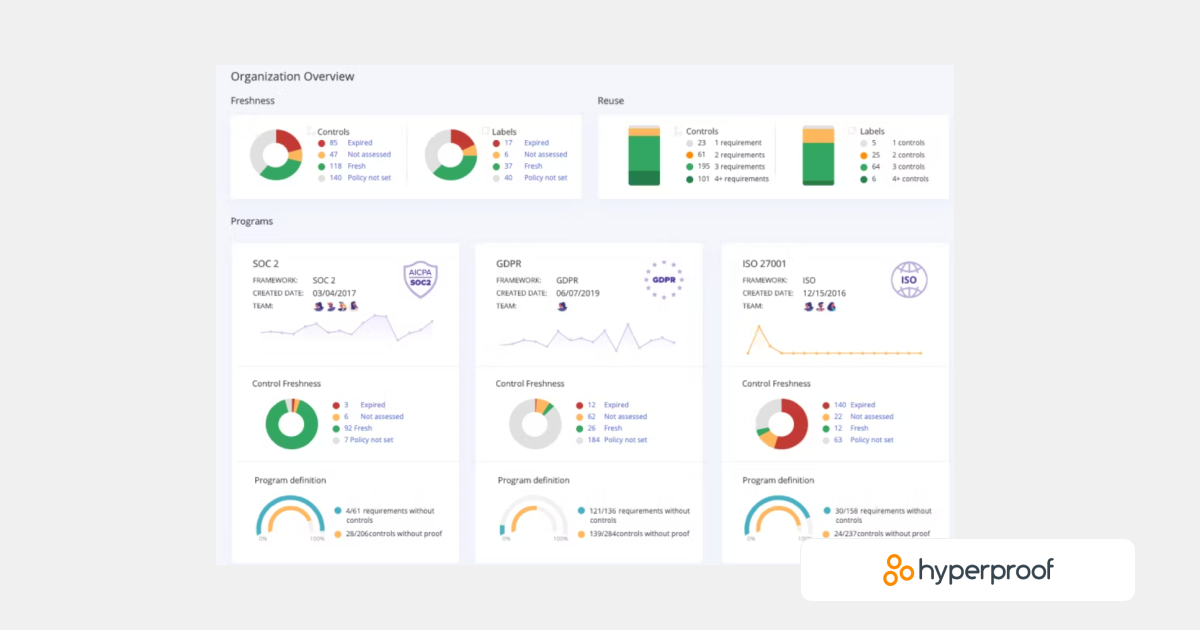
| Category | Details |
| Best For | Compliance teams managing multiple frameworks and tracking evidence across controls. |
| Overview | Hyperproof focuses on control management and compliance task tracking. It helps maintain audit readiness, but lacks built-in features for performing risk assessments, managing vendors, or resolving exceptions in an ongoing, structured way. |
| Strengths | ✅ Tracks controls across multiple compliance frameworks
✅ Automates evidence collection and status monitoring |
| Limitations | ⚠️ Not designed for structured risk workflows or cross-team remediation
⚠️ Minimal functionality for IT asset assessments or vendor risk inventories |
| When to Consider | If your focus is managing control documentation but you can work around the lack of tools for continuous risk assessments and real-time security workflows across teams and systems. |
| Other Comparisons | Hyperproof vs Drata vs Isora GRC |
4. AuditBoard
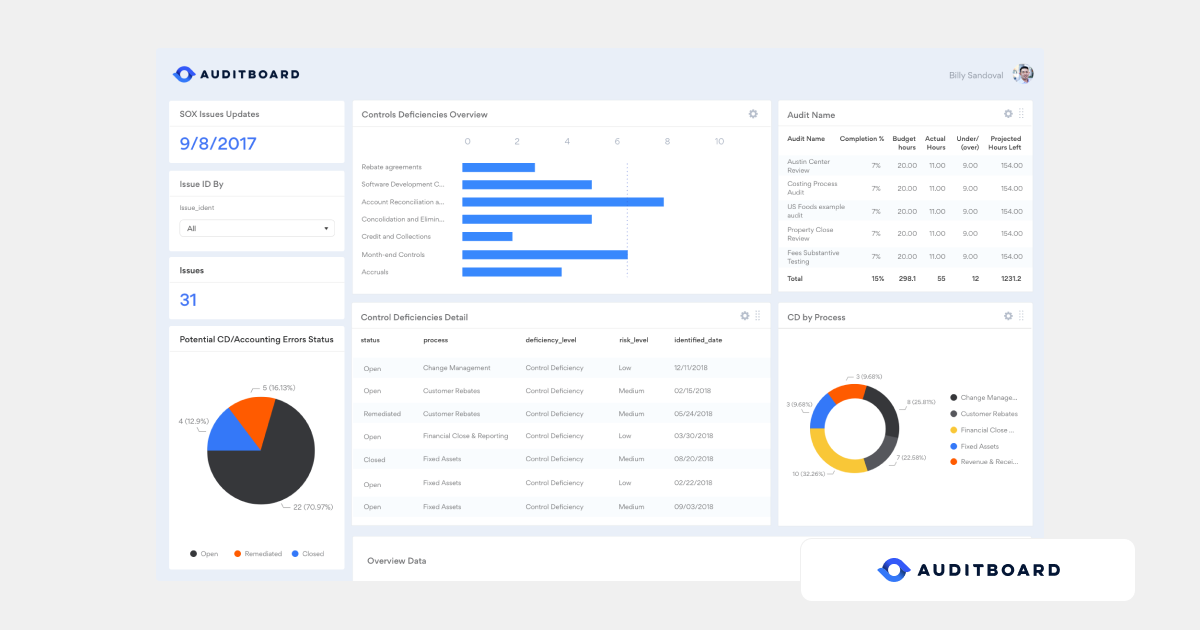
| Category | Details |
| Best For | Internal audit and SOX teams managing control documentation and audit trails. |
| Overview | AuditBoard is purpose-built for audit teams. It’s great for managing evidence and compliance reports, but lacks tools for broader IT and vendor risk workflows, especially those involving live risk registers or exception tracking. |
| Strengths | ✅ Great for internal audit processes and control testing
✅ User-friendly for auditors and compliance officers |
| Limitations | ⚠️ No support for structured IT or third-party risk management workflows
⚠️ Can’t track risk ownership, asset assessments, or cross-team exceptions |
| When to Consider | If you’re focused on audit documentation but can work around the platform’s lack of support for hands-on, repeatable security team workflows outside the audit department. |
| Other Comparisons | AuditBoard vs ServiceNow GRC vs Isora GRC |
5. OneTrust GRC
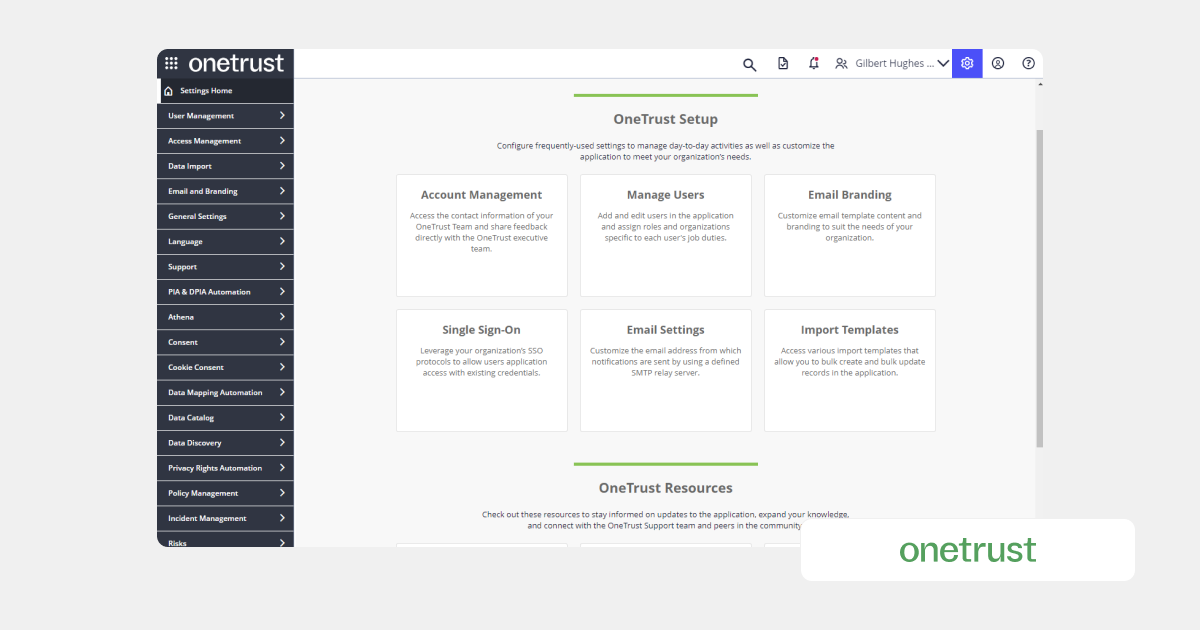
| Category | Details |
| Best For | Legal, privacy, and vendor compliance teams managing documentation and regulatory frameworks. |
| Overview | OneTrust GRC is strong in privacy compliance and vendor documentation but falls short for security teams managing internal risk, IT assets, or third-party remediation workflows. It’s more checklist-driven than operationally collaborative. |
| Strengths | ✅ Prebuilt assessments like CAIQ, SIG, and HECVAT for vendor risk
✅ Strong privacy and regulatory compliance features |
| Limitations | ⚠️ Lacks workflows for internal risk assessments or exception tracking
⚠️ Limited usability for cross-functional teams beyond legal or compliance |
| When to Consider | If you’re focused on vendor attestations or privacy compliance but can work around the limited tools for managing real-time risk and remediation across technical teams and systems. |
| Other Comparisons | OneTrust vs ServiceNow GRC vs Isora GRC |
6. LogicGate
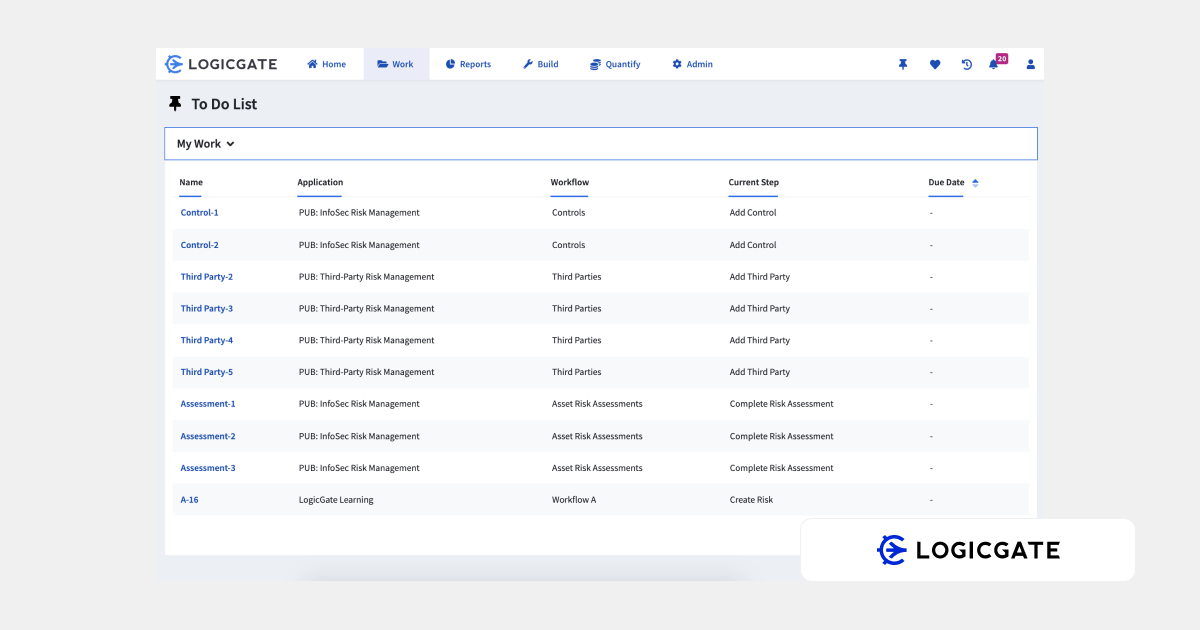
| Category | Details |
| Best For | Teams that want to design and control their own GRC workflows using a flexible, no-code builder. |
| Overview | LogicGate is a customizable GRC platform that lets users build their own processes for risk, compliance, and audit. While it offers more flexibility than Vanta, it requires time and effort to configure for IT and vendor risk management workflows. |
| Strengths | ✅ Highly flexible platform with visual workflow builder
✅ Supports frameworks like NIST, ISO, and SOC 2 with customizable mapping |
| Limitations | ⚠️ Requires significant setup time and internal resources
⚠️ No prebuilt tools for risk registers, asset tracking, or vendor assessments |
| When to Consider | If you need a flexible platform and have the time to build it but can work around the lack of out-of-the-box structure for operational security risk management and exception handling. |
| Other Comparisons | LogicGate vs Archer IRM vs Isora GRC |
7. ZenGRC
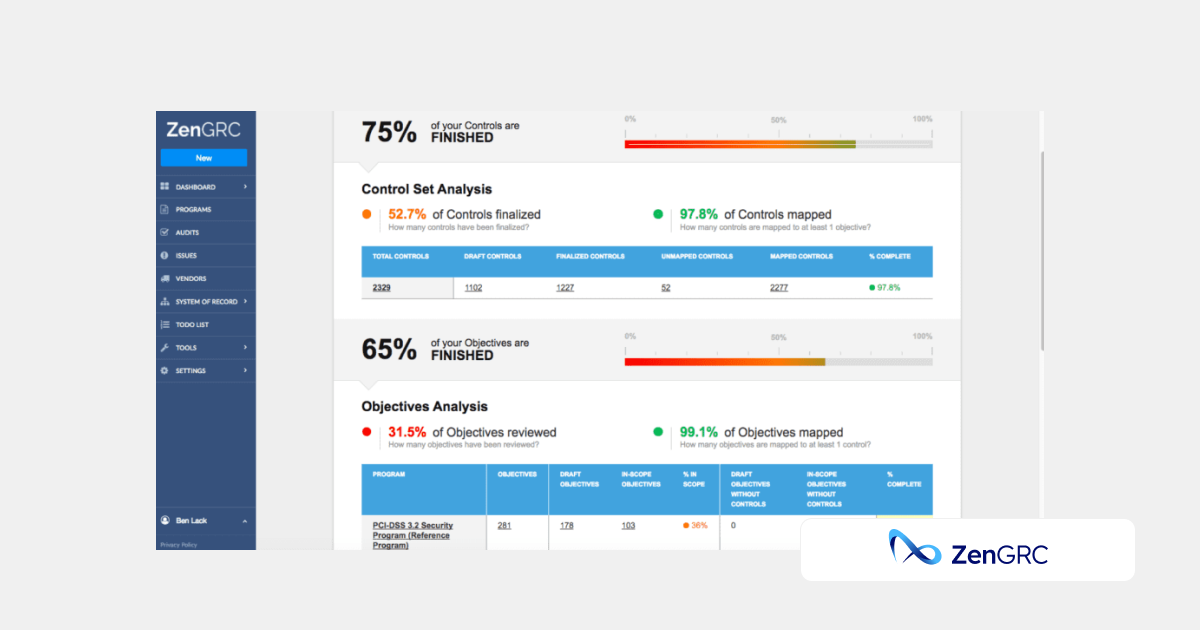
| Category | Details |
| Best For | Small teams or early-stage companies managing audit tasks and basic compliance frameworks. |
| Overview | ZenGRC helps teams get organized for audits and compliance but doesn’t support continuous IT or vendor risk management. Like Vanta, it’s easy to use, but focused on checklist workflows rather than structured, repeatable risk processes. |
| Strengths | ✅ Quick setup and simple UI for compliance tracking
✅ Framework templates for SOC 2, ISO, and others |
| Limitations | ⚠️ No structured workflows for risk assessments, asset management, or exception tracking
⚠️ Not designed for scaling across security teams or vendor ecosystems |
| When to Consider | If you’re just starting with compliance and need something lightweight but can work around the limited ability to manage ongoing IT risk, remediation, or third-party oversight at scale. |
| Other Comparisons | ZenGRC vs AuditBoard vs Isora GRC |
8. Onspring
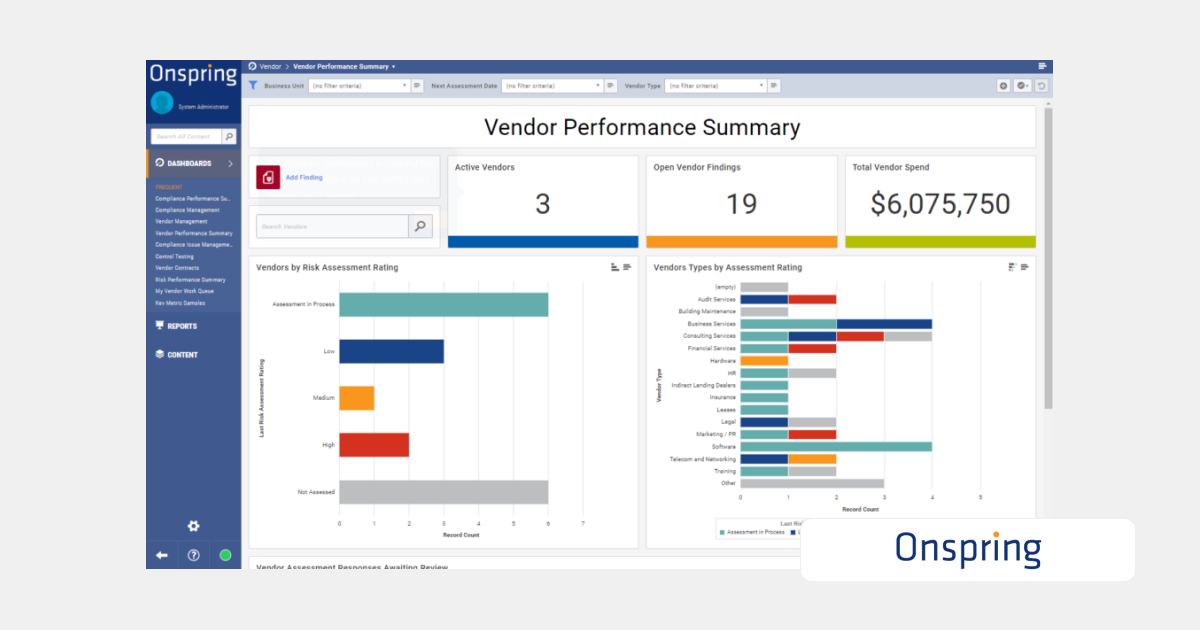
| Category | Details |
| Best For | Legal, audit, or compliance teams looking for a no-code platform to build custom GRC processes. |
| Overview | Onspring lets organizations design their own governance workflows from scratch. While more flexible than Vanta, it still lacks the prebuilt structure security teams need to launch and scale IT risk and vendor management programs quickly. |
| Strengths | ✅ Fully customizable, visual process builder
✅ Suitable for legal and compliance-led GRC initiatives |
| Limitations | ⚠️ Requires setup time and design resources to configure effectively
⚠️ No built-in features for risk assessments, exception tracking, or vendor oversight |
| When to Consider | If you want full control over GRC workflows but can work around the time-to-value gap and lack of security-specific tools for managing day-to-day operational risk across teams and systems. |
| Other Comparisons | Onspring vs AuditBoard vs Isora GRC |
9. Archer IRM
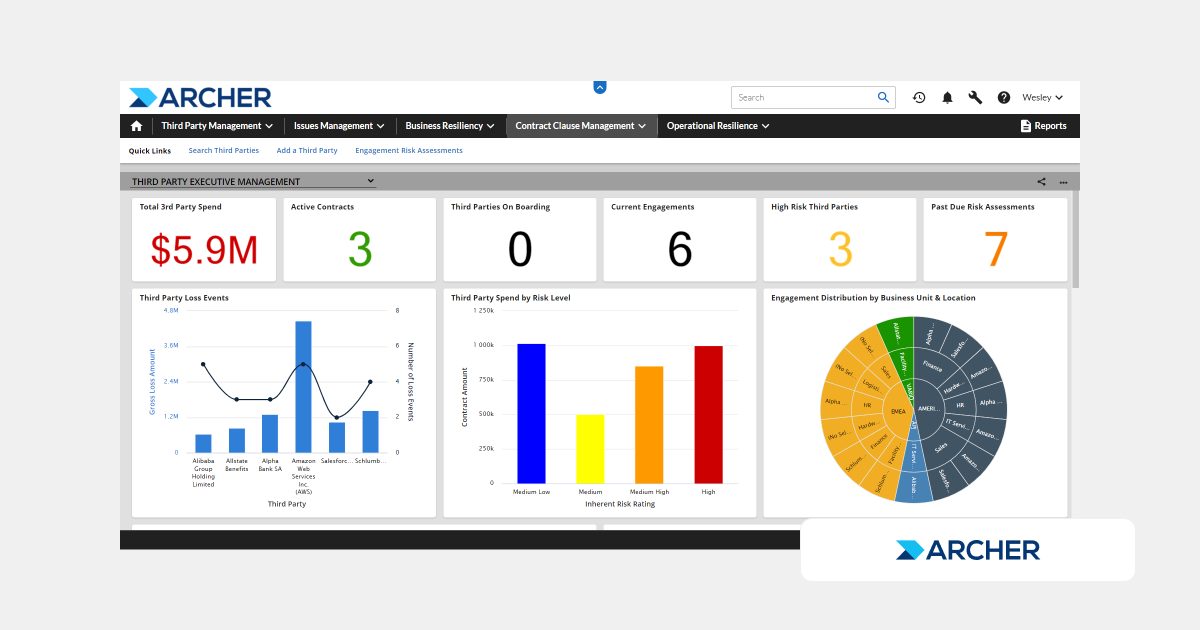
| Category | Details |
| Best For | Large enterprises with formalized GRC programs and dedicated governance teams. |
| Overview | Archer IRM is a legacy GRC platform with broad features and high configurability. The tool offers strong capabilities but lacks the speed, ease of use, and built-in risk workflows that fast-moving security teams need for daily work. |
| Strengths | ✅ Deep compliance functionality with support for complex governance programs
✅ Highly configurable across audit, risk, and compliance domains |
| Limitations | ⚠️ Heavy to implement and maintain, with long deployment cycles
⚠️ Lacks intuitive tools for structured IT or third-party risk management workflows |
| When to Consider | If you need a comprehensive GRC system for enterprise governance but can work around the platform’s complexity, cost, and lack of agility for fast, cross-functional security programs focused on risk ownership and remediation. |
| Other Comparisons | Archer IRM vs ServiceNow GRC vs Isora GRC
LogicGate vs Archer IRM vs Isora GRC ZenGRC vs Archer IRM vs Isora GRC |
What Our Customers Say About Isora GRC
Security teams at top institutions are using Isora GRC to replace legacy tools and manual processes with intuitive workflows and actionable insight.
“Moving from manual processes to using Isora was a breath of fresh air. What used to take months is now automated, reliable, and defensible. Isora saves us significant time while delivering accurate insights that improve decision-making.”
Jessica Sandy, IT GRC Manager, The University of Chicago
“Isora has been essential in helping us meet our University of California cybersecurity requirements across a decentralized campus. Automating assessment data collection and reporting has given us clear visibility into unit-level risks, enabling us to prioritize resources effectively and address gaps with confidence.”
Allison Henry, CISO, The University of California, Berkeley
FAQs
What are some alternatives to Vanta?
Vanta is a security compliance automation platform focused on helping companies achieve certifications like SOC 2 and ISO 27001. Alternatives like Isora GRC support broader IT and vendor risk management—enabling teams to run internal and external assessments, track exceptions, and maintain risk registers beyond the audit cycle.
Why do teams switch from Vanta to platforms like Isora GRC?
While Vanta is effective for audit readiness, many teams outgrow it when they need more than checkbox compliance. It lacks the workflows to manage risk across departments and vendors. Isora GRC offers purpose-built tools for operationalizing risk through assessments, inventories, and exception tracking.
Does Isora GRC replace tools like Vanta or complement them?
For teams focused on broader risk management, Isora GRC replaces Vanta. It helps teams move from certification prep to continuous risk oversight, offering structured workflows for managing risk across people, systems, and third parties.
Which platform is better for managing ongoing IT and vendor risk?
Vanta focuses on getting audits done. Isora GRC is designed for managing risk over time—delivering repeatable assessment workflows, exception resolution, and vendor due diligence in a single platform that supports long-term security goals.
What should I look for in a Vanta alternative?
Look for a platform that enables continuous risk workflows, not just point-in-time compliance. Features like collaborative assessments, asset and vendor inventories, exception management, and risk visualization are essential. Isora GRC checks all those boxes—and scales as your program grows.
This content is for informational purposes only and does not constitute legal or compliance advice. See our full disclaimer.


















